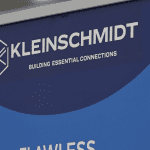
Build or Buy a TMS – what should your logistics business do?
If you’re looking for a transportation management system for the first time or looking to upgrade your current TMS, both building your own or seeking a 3rd party provider to buy bring their own sets of challenges and solutions.
Typically, brokerages, 3PLs, shippers, or carriers look to start a new system because the current TMS no longer meets their needs, if they have a TMS to begin with. These inflection points inevitably lead to new costs of learning a new system or continuing to try and build purely custom solutions. The transportation management system is the centerpiece for a growing and robust logistics outfit, so the decision to build custom or buy pre-packaged cannot be taken lightly.
The pros(+) of Building a TMS
(+) A purely custom TMS for your business
There’s one giant positive for building a TMS: a business can make it their own in its entirety. Building means complete customization. Every logistics operation works a little differently: different workflows, processes, invoicing, etc. With a transportation management system built to fit exact needs, the front and back ends of the business should run smoothly and efficiently. Additionally, the business has at least one person in-house who knows every nook and cranny of the TMS. When building a transportation management system, the architects involved can build to exact workflow specifications. If the company only needs one integration partner for accounting, then the engineers need only build that one integration to connect via API. The same goes for any type of integration. With an inner circle of trusted partner integrations, there’s room to advance those partnerships without risk of offending those partners’ competitors. Instead of building a network of partnerships a mile wide but a foot deep, the relationships can grow intertwined together. Simply, a business that builds a TMS can do what it needs on its own time. There is no need to wait on 3rd party vendors to make updates, changes, or customizations when the in-house development team can do all of it internally. Updates and changes can happen on a continuing basis rather than waiting for any updates, if they happen, from the vendor.
The cons (-) of Building a TMS
(-) Fewer use cases for creativity
One major drawback is a business doesn’t know what it doesn’t know. Many updates for TMS providers come either from customer requests or in-house creativity. While a company that builds its own will inevitably have in-house creativity, the changes based on customer requests may be limited compared to a 3rd party provider. The updates for a built TMS may be ongoing, but will only focus on the improvement of the TMS as the company sees fit leading to a relatively inflexible product.
(-) Hiring a person or team to build and maintain the TMS
Building a completely custom TMS means you always need at least one person, ideally a team of people, on staff who understand the intricate details of the functionality. If that person ever leaves, who steps up? The new person may want to make their own changes, but were not part of the team who put together the original code. While tech-forward logistics companies should have development teams, those employees may come and go. Therefore, the risk of having to band-aid solutions after a key stakeholder leaves rises. This may lead to an initially robust, but eventually fragile, Frankenstein of a TMS if not handled carefully.
(-) Monolithic integration network
If building a TMS, choose partners wisely. If the partner company ever collapses, what does that mean for the TMS? There will be a rush to find a comparable service partner. On top of that, it will take time and higher costs to build the API connection for the new partner while still needing the functionality to work for customers.
Cost considerations for Building a TMS
When building a TMS from scratch, a business must consider the costs of manpower, hardware (server space), software (hosting site like Amazon Web Services or Salesforce), maintaining proper internet security certificates, and keeping integrations updated. With a dedicated team of people for the transportation management system, the costs may be higher upfront and continue to grow with the nature of hiring, promoting, and pay scale adjustments. In addition, paying for server space includes lease agreements for that space. If any customer agreements change before server space lease agreements are up, the server space is already committed and acts as a sunk cost. The business building the TMS will also need to maintain integrations and security certifications which cost time.
The pros (+) and cons (-) of Buying a TMS
(+) Ready to go out of the box
When buying a transportation management system, users need to tackle a learning curve. However, there is very little, if any, development involved. The TMS comes out of the box ready to go for the logistics business and users.
(+) Partner ecosystem
Typically, a TMS provider has created an ecosystem of vendors for a variety of functionality such as load tracking, accounting, or posting loads. As such, business leaders can pick the flavor that best fits their own processes. Brokerages, 3PLs, carriers, and shippers all work a little differently. Owners and users will prefer one API connection over another, and a TMS provider already has multiple options available.
(+) Use case creativity
As a third party vendor, a TMS provider has access to a variety of clients. With so many people providing feedback, the vendor will better keep a pulse on the advancements customers need. Because different customers prioritize different needs, the TMS vendor will make updates that best serve a majority of their customers. That may turn out to be a feature one business owner requested but another didn’t even consider.
(+) No need to coordinate updates
When buying a TMS, the provider will handle all software updates and API connection changes with their partners. Some may update once a year, some make changes every four months. Either way, the maintenance of those updates is on the provider, not the customer.
The cons (-) of Buying a TMS
(-) It’s not perfect
Inevitably, buying a TMS won’t have every single feature or function for your business. When purchasing a TMS from a provider, it should still have a vast majority of what you’re looking for. However, because it’s not custom-built to your business’s specifications, there may be one or two features the business must live without or find other solutions.
(-) Dependency on the vendor
Because the vendor is providing the TMS, the provider owns the code. Business leaders will ultimately be deciding on a TMS that has the greatest functionality and, even more importantly, the vendor’s own business health/longevity. If the provider fails as a business, customers may be left scrambling to find or build a replacement that matches or advances the functionality of the original provider.
(-) Potentially same system as competition
Using the same solution as a competitor is a double-edged sword. On one hand, buying a TMS may make it more challenging to differentiate from the competition. However, the business leaders have a good idea of how their competitors’ processes work and can tailor their message to prospects appropriately.
Cost considerations for Buying a TMS
When buying from a TMS provider, many of the costs of building a TMS disappear. While a business paying for a TMS will have the fixed cost of user licenses, there may not be the costs of keeping a development team, paying for server space, or paying to host a site online for the TMS. Buying a TMS allows a company to focus directly on its customers. Maintaining internet security, updating integrations, server space, and hosting a site all fall on the TMS provider instead.
Of course the ideal scenario? Find a vendor who sells a TMS with a large number of options to effectively configure it. The best of both worlds provides an opportunity to have something ready out of the box but still allows for custom workflows and solutions to match your business.




